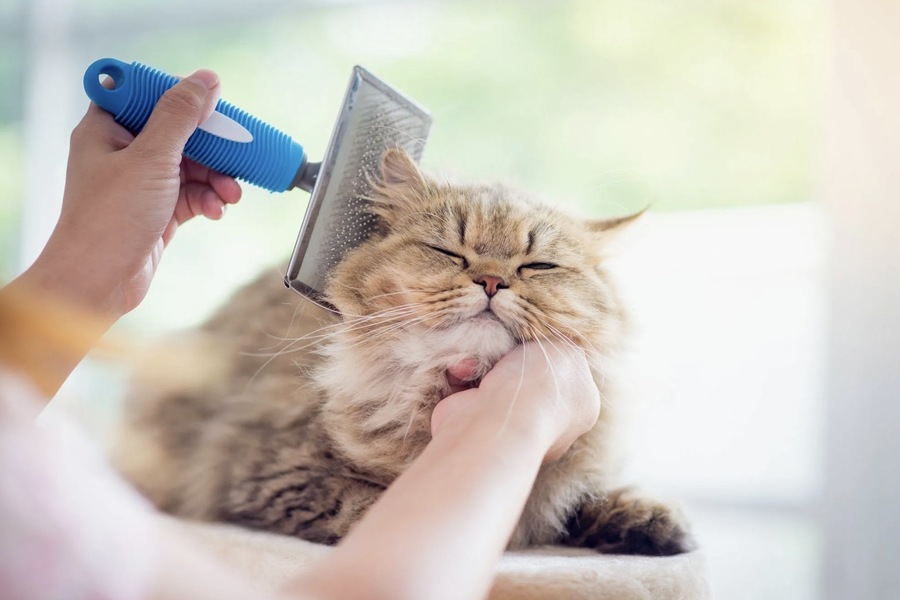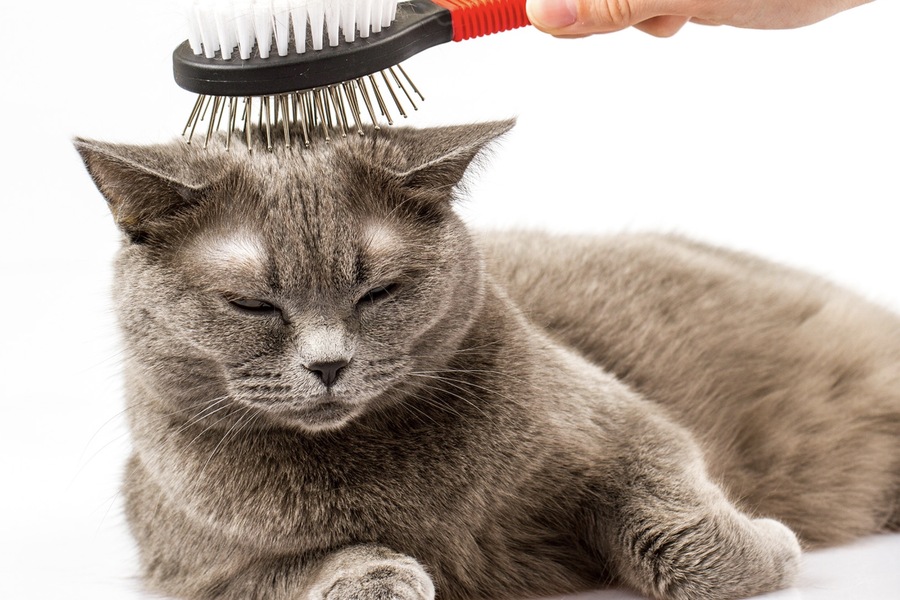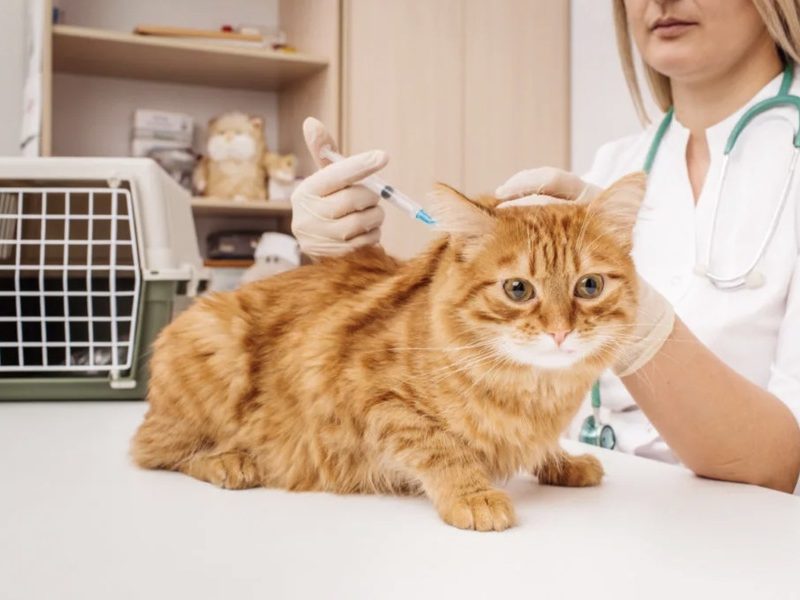Cats, especially those with fluffy, luxurious coats, are often the epitome of grace and beauty. However, these elegant felines can be quite whimsical when it comes to personal hygiene. While many cats are adept at self-grooming, the intricacies of maintaining a fluffy coat can sometimes overwhelm them. This is where human intervention through grooming becomes essential, particularly when considering services like pet boarding that ensure comprehensive care.
Understanding Grooming for Cats
Grooming is the process of cleaning, brushing, and maintaining a cat’s coat, skin, ears, nails, and overall appearance. It is not merely about aesthetics but is crucial for the cat’s health and well-being. Grooming ensures that a cat’s fur remains free of mats and tangles, skin issues are prevented, and the overall hygiene of the cat is maintained.
Why is Grooming Necessary for Cats?
- Health Maintenance: Regular grooming helps in detecting health issues early, such as skin infections, parasites like fleas and ticks, and abnormalities like lumps or bumps. Early detection can lead to prompt treatment, preventing minor issues from becoming serious health concerns.
- Preventing Matting and Tangles: Long-haired cats are particularly prone to mats, which can cause discomfort and skin infections if not addressed promptly. Mats can also restrict a cat’s movement and lead to skin irritation or wounds beneath the tangles.
- Reducing Shedding: Grooming helps in managing and reducing the amount of loose fur, which can otherwise lead to excessive shedding and hairballs. Regular grooming removes dead hair and minimizes the amount of fur that ends up on furniture and clothing.
- Enhancing Comfort: Regular grooming keeps the cat comfortable by removing dirt, debris, and dead hair from the coat. This can prevent skin irritations and infections and contribute to the cat’s overall comfort and well-being.
- Improving Bonding: Grooming sessions can strengthen the bond between the cat and the owner through gentle and consistent care. It provides an opportunity for positive interactions and trust-building, making the cat more relaxed and cooperative during grooming.
- Odor Control: Grooming helps in managing and reducing any unpleasant odors by keeping the cat’s coat and skin clean. Regular cleaning of the ears and teeth also helps in preventing bad smells.

Types of Grooming: Hygienic and Show Grooming
Hygienic Grooming
Hygienic grooming focuses on maintaining the basic cleanliness and health of the cat. This type of grooming is essential for all cats, irrespective of their breed or coat length. It includes:
– Brushing: Regular brushing to remove loose fur, prevent matting, and stimulate the skin. Brushing helps distribute natural oils throughout the coat, keeping it healthy and shiny.
– Bathing: Occasional baths to keep the coat clean and free from dirt and parasites. Cats are generally not fond of water, so it’s important to use gentle, cat-specific shampoos and ensure a stress-free bathing experience.
– Ear Cleaning: Removing wax buildup and checking for infections. Clean ears are essential for preventing ear mites and infections, which can cause discomfort and hearing problems.
– Nail Trimming: Clipping nails to prevent overgrowth and potential injuries. Long nails can cause pain and lead to infections if they curl into the paw pads.
– Dental Care: Ensuring good oral hygiene by brushing teeth and checking for dental issues. Dental care prevents plaque buildup, gingivitis, and other dental problems that can affect a cat’s overall health.
Show Grooming
Show grooming is more elaborate and is aimed at preparing cats for competitions and exhibitions. It emphasizes enhancing the cat’s natural beauty and meeting breed standards. Show grooming includes:
– Professional Brushing and Combing: Using specific brushes and combs to achieve a flawless coat. This process ensures that the cat’s coat is smooth, untangled, and free of imperfections.
– Specialized Bathing: Using high-quality shampoos and conditioners tailored to the cat’s coat type. These products enhance the coat’s texture and shine, making it look its best for shows.
– Blow-Drying and Styling: Blow-drying the coat to add volume and using grooming products for a polished look. Styling involves techniques that highlight the cat’s best features and meet the criteria of the show standards.
– Trimming and Shaping: Trimming fur around specific areas like the paws, ears, and face to meet show standards. This precise trimming ensures that the cat’s appearance is in line with breed-specific requirements.
– Final Touches: Applying finishing sprays or powders to enhance the coat’s shine and texture. These finishing products give the cat a flawless, show-ready appearance.
Procedures Included in Grooming
- Brushing and Combing: Different types of brushes (slicker brushes, bristle brushes) and combs (wide-toothed, fine-toothed) are used depending on the cat’s coat. Brushing removes loose fur, prevents matting, and stimulates the skin to produce natural oils.
- Bathing: Using cat-specific shampoos and conditioners to clean the coat without causing irritation. Bathing removes dirt, debris, and parasites, keeping the cat’s skin and coat healthy.
- Drying: Towel drying followed by blow-drying to prevent mats and ensure the coat dries thoroughly. Proper drying is essential to avoid dampness that can lead to skin issues.
- Ear Cleaning: Gently cleaning the ears with a vet-approved solution to prevent infections. Ear cleaning removes wax and debris, preventing ear mites and infections.
- Nail Clipping: Trimming the nails using cat nail clippers to prevent overgrowth and splitting. Regular nail trimming prevents injuries and keeps the cat comfortable.
- Teeth Brushing: Using cat-safe toothpaste and a toothbrush to maintain dental hygiene. Dental care prevents plaque buildup, gingivitis, and other dental problems.
- Eye Cleaning: Wiping the eyes to remove discharge and prevent staining. Clean eyes reduce the risk of infections and maintain the cat’s overall appearance.
- Sanitary Trim: Trimming the fur around the cat’s rear end to maintain cleanliness. This prevents the accumulation of dirt and feces, which can cause infections and discomfort.
The Benefits of Grooming
- Improved Health: Regular grooming helps in early detection of health issues and prevents skin infections and parasites. It allows for timely intervention and treatment of potential problems.
- Enhanced Appearance: A well-groomed cat looks more attractive, with a shiny, smooth coat. Regular grooming enhances the cat’s natural beauty and overall appearance.
- Reduced Shedding: Frequent grooming minimizes shedding, keeping the home cleaner and reducing hairball formation. It helps manage the amount of loose fur in the environment.
- Comfort and Hygiene: Grooming keeps the cat clean and comfortable, especially in hard-to-reach areas. It prevents mats, tangles, and skin irritations, contributing to the cat’s overall comfort.
- Stress Reduction: Regular grooming sessions can be calming and reduce stress for the cat. Gentle grooming techniques and positive interactions make the cat more relaxed and cooperative.
- Socialization: Grooming sessions provide an opportunity for socialization, helping cats become more comfortable with handling and human interaction.

Why You Need to Contact Grooming Professionals
While regular home grooming is essential, professional groomers offer expertise and specialized care that can be beneficial for several reasons:
- Expertise and Experience: Professional groomers are trained to handle different breeds and coat types, ensuring optimal care. They have the knowledge and skills to address specific grooming needs.
- Proper Tools and Products: They use high-quality tools and products tailored to each cat’s needs, which might not be readily available to pet owners. Professional groomers have access to specialized equipment and products that enhance the grooming process.
- Thorough Grooming: Professionals provide a more thorough grooming session, addressing areas that might be overlooked at home. They ensure comprehensive care, covering all aspects of grooming.
- Handling Difficult Cats: Experienced groomers can manage cats that are difficult to groom due to temperament or health issues. They have the skills to handle nervous, aggressive, or uncooperative cats safely and effectively.
- Show Preparation: For show cats, professional grooming is essential to meet the stringent standards of cat shows. Groomers are familiar with the requirements and techniques needed to prepare cats for competitions.
- Time-Saving: Professional grooming saves time for pet owners, especially those with busy schedules. It ensures that the cat receives regular, thorough grooming without the owner having to spend hours on the process.
- Stress-Free Experience: Professional groomers create a stress-free environment for the cat, making the grooming experience more pleasant. They use techniques and approaches that reduce anxiety and discomfort.
End Note
In conclusion, grooming is a vital part of maintaining the health and beauty of fluffy beauty cats. Whether for hygiene or show purposes, grooming ensures that these whimsical felines remain healthy, comfortable, and stunningly beautiful. Regular home grooming combined with periodic visits to professional groomers can help keep your cat in the best possible condition, enhancing their quality of life and your bond with them.

Soccer lover, ramen eater, guitarist, Bauhaus fan and multidisciplinary designer. Working at the intersection of modernism and programing to save the world from bad design. My opinions belong to nobody but myself.


